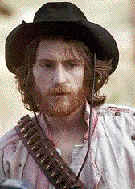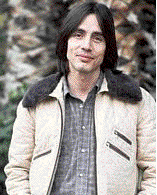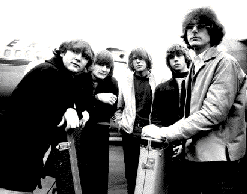
David Crosby, Gene Clark, Michael Clarke, Chris Hillman, Jim McGuinn, 1965
|
Sweetheart of the Rodeo, the first real country-rock album, was released by the Byrds in 1968, almost 4 years before the Eagles came onto the scene. This was the first time rock and country music were blended, which became so popular in Nashville that the Byrds became the first "rock" group to ever play in the Grand Ol' Opry. The Byrds began by combining Dylan-esque folk music with a Beatles-esque beat, virtually inventing "folk-rock" in 1965. This innovative sound, along with the flawless harmonies of Jim (Roger) McGuinn, David Crosby, and Gene Clark, influenced many groups of the 1960s, including the Beatles, who once named the Byrds their favourite American act. Their later experimentation with country-rock paved the way for groups like the Eagles, Poco, and the Flying Burrito Brothers to emerge. |
| Although together for less than three years, the Buffalo Springfield had a huge impact on rock and roll. Their biggest hit, "For What It's Worth," was an anti-establishment protest song, warning young people about the dangers of taking on the system.
The Buffalo Springfield were also known for their innovation with country-rock music. Songs like "Hot Dusty Roads," "Go And Say Goodbye," and "Bluebird" mixed the sounds of Nashville with the rocking beat of Los Angeles; "Bluebird" even featured a guest banjo player, Charlie Chin. When Canadian bassist Bruce Palmer was deported for drug possession, the group hired Jim Messina (later of Loggins and Messina); Messina did not last long, and the group replaced him with Randy Meisner. Before Meisner could play on any record, however, the group broke up, due to internal troubles. This allowed the members to move on to new groups, which became extremely successful. |
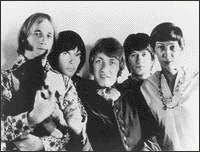
Stephen Stills, Neil Young, Dewey Martin, Richie Furay, Bruce Palmer
|
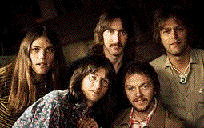
Timothy B. Schmidt, Richie Furay, George Grantham, Paul Cotton, Rusty Young, 1973
|
When the Buffalo Springfield broke up in 1968, two members, Richie Furay and Jim Messina, formed a new group, Poco, with Rusty Young, George Grantham, and Randy Meisner. They became one of the first rock groups to incorporate a full-time pedal steel guitar player (Young), which heavily contributed to their "country-rock" sound. Following personality clashes, Meisner left the group in 1969, to be replaced a year later by Timothy B. Schmidt. Meisner, of course, went on to co-form the Eagles in 1971, and when he left in 1977, he was again replaced by Schmidt. Poco was obviously a huge influence on the Eagles--without them, the Eagles would not have had their two high-singing bassists, or their country-rock sound on their first albums. |
| Gram Parsons and Chris Hillman left the Byrds shortly after the release of Sweetheart of the Rodeo, and formed the Flying Burrito Brothers in 1968. The band focused on country/bluegrass music, and featured Hillman on mandolin, as well as a pedal-steel guitar player named "Sneaky" Pete Kleinow. Their drummer left during recording sessions for their first album, so another former Byrd, Michael Clarke, was recruited as his replacement. Another original member left after their first album, too, so the group replaced him with Bernie Leadon, who specialized on banjo, but played guitar and dobro, as well. Following Gram Parsons' departure from the group in 1970, the group underwent major personnel changes, as Leadon joined the Eagles, and HIllman and guitarist Al Perkins joined Manassas. The group is still together today, but none of the original members are in it. |
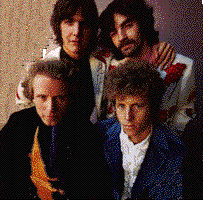
The Flying Burrito Brothers, 1969
|
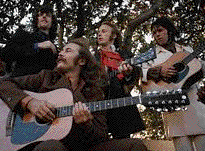
Graham Nash (standing), David Crosby, Stephen Stills, Neil Young,1969
|
Formed from the remnants of Buffalo Springfield, the Hollies, and the Byrds, CSN&Y went on to become one of the biggest acts in rock and roll. The group proved themselves at their second gig, Woodstock, in August, 1969. Their tight harmonies and experimentation in country-rock music were definite influences on the Eagles, as well as their hip, anti-establishment lyrics. CSN&Y played both country/folk music ("Teach Your Children, "4+20," "Helplessly Hoping") and rock ("Ohio," "Long Time Gone," "Woodstock"). They were an instant success, becoming the group everyone wished to emulate, including the Eagles. |
| Like Glenn Frey, Bob Seger was a local rocker in Detroit, Michigan. Seger played black rhythm and blues as well as any other Motown act, and quickly became a local legend. Other Detroit musicians idolized him, including Frey, who was often allowed to sit in with Seger when he was playing and recording. He got Frey's group, the Mushrooms, a recording contract, and wrote and produced their single, "Such A Lovely Child." Later, Seger co-wrote the Eagles' hit, "Heartache Tonight," with Frey, Don Henley, and John David Souther. Frey also sang back up on Seger's first hit, "Ramblin' Gamblin' Man," in 1968.
Before Frey left Detroit for Los Angeles, Seger gave him a piece of advice that changed Frey's life forever. He told Frey that the only way a person could make it in the music world was if he wrote his own music, and owned the copyrights to that music. These wise words encouraged Frey to later write his own songs in the Eagles. |
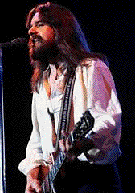
Bob Seger in 1978
|
|
||
|
||
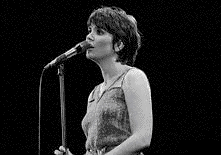
Linda Ronstadt in concert, 1980
|
One of the first really successful female acts, Linda Ronstadt started out as the singer for a country group, called The Stone Poneysm in the late 1960s. From time to time, Bernie Leadon was asked to play with group, and even played on a few of their recorded songs.
After leaving the Stone Poneys, Ronstadt became a solo act, and needed a band to back her on tours. She and manager John Boylan hired local musicians, including the future members of the Eagles. The four original Eagles, however, only played one show together during that tour, but that was enough. They knew they could be a great group on their own, and, with Ronstadt's blessing, officially became the Eagles in September of 1971. |
 Links Index Rock And Roll Hall Of Fame Induction Links Index Rock And Roll Hall Of Fame Induction  |
